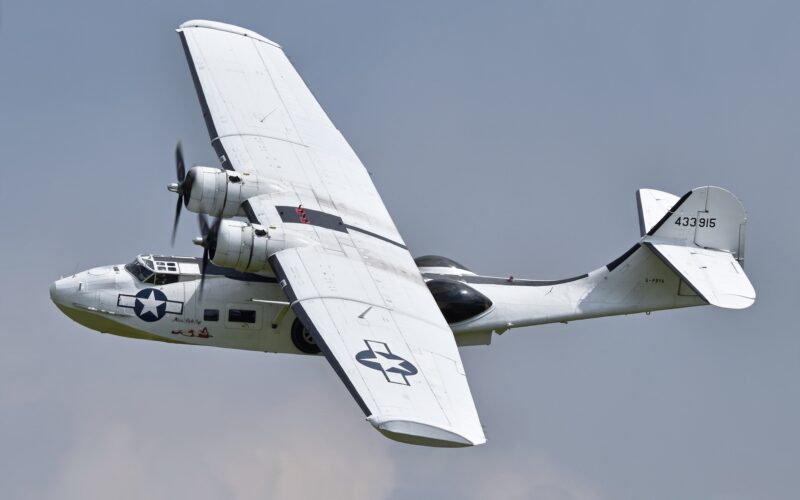Catalina Aircraft announced the revival of the legendary Catalina aircraft as the Catalina II Amphibious Turboprop on July 25, 2023.
The company has initiated a production re-start program for the Next Generation Amphibious Aircraft (NGAA) Catalina II, a twin turboprop amphibious flying boat, and is now gearing up to accept pre-orders as part of this program.
The Catalina II is built on the design principles of the 28-5ACF Catalina amphibious flying boat, already certified by the US Federal Aviation Administration and Transport Canada.
It introduces two new production variants, namely the NGAA Civilian Variant and the NGAA Special Use Variant. These variants have been designed to cater to airborne amphibious operations in the private, commercial, government, and military sectors.
The NGAA Catalina II Civilian Variant offers a 32,000-pound Maximum Take-Off Weight (MTOW), twin turboprop engines, and is sea state 2 capable [wind speed of up to 6 knots, waves between 0,66 feet/20 centimeters – ed. note]. It can accommodate up to 34 passengers or 12,000 pounds of cargo.
The NGAA Catalina II Special Use Variant is designed for government and military needs, with a 40,000-pound Maximum Take-Off Weight (MTOW) and sea state 3 capability [wind speed of up to 10 knots, waves between 2 feet/60 centimeters – ed. note].
“Interest in the rebirth of this legendary amphibian has been extraordinary,” Lawrence Reece, President of Catalina Aircraft, said in a press release. “We are looking forward to moving this program forward rapidly.”
While specific pricing details have not yet been announced, Catalina Aircraft expects deliveries to commence in 2029.
The seaplane renaissance?
The Catalina flying boat, also known as the Consolidated PBY Catalina, is an iconic seaplane that played a significant role during the Second World War and beyond. Designed and built by the US aircraft manufacturer Consolidated Aircraft, the Catalina made its maiden flight in 1935. It was used in various roles ranging from long-range maritime reconnaissance, and anti-submarine warfare, to search and rescue missions, and transport duties. Production stopped in 1945. Post-Second World War, the Catalina continued to serve in various military and civilian capacities.
As tensions rise in the South China Sea and the Arctic, seaplanes are poised to experience a renaissance. With these two regions becoming significant geopolitical hotspots, the versatility and strategic advantages offered by seaplanes are gaining renewed attention and interest.
Some examples have already emerged in recent years. In 2007, the ShinMaywa US-2 entered service with the Japan Maritime Self-Defense Force. The Chinese AG600 seaplane made its maiden flight in 2020 and is expected to enter service by 2025. Russia is also reportedly studying resuming the development of the Beriev Be-40, a Soviet-era amphibious flying boat prototype.
In February 2023, DARPA selected General Atomics and Boeing’s Aurora to develop designs for the Liberty Lifter ground effect transport seaplane program. The Liberty Lifter is designed to be a ‘long-range, low-cost X-Plane capable of seaborne strategic and tactical heavy lift’.

